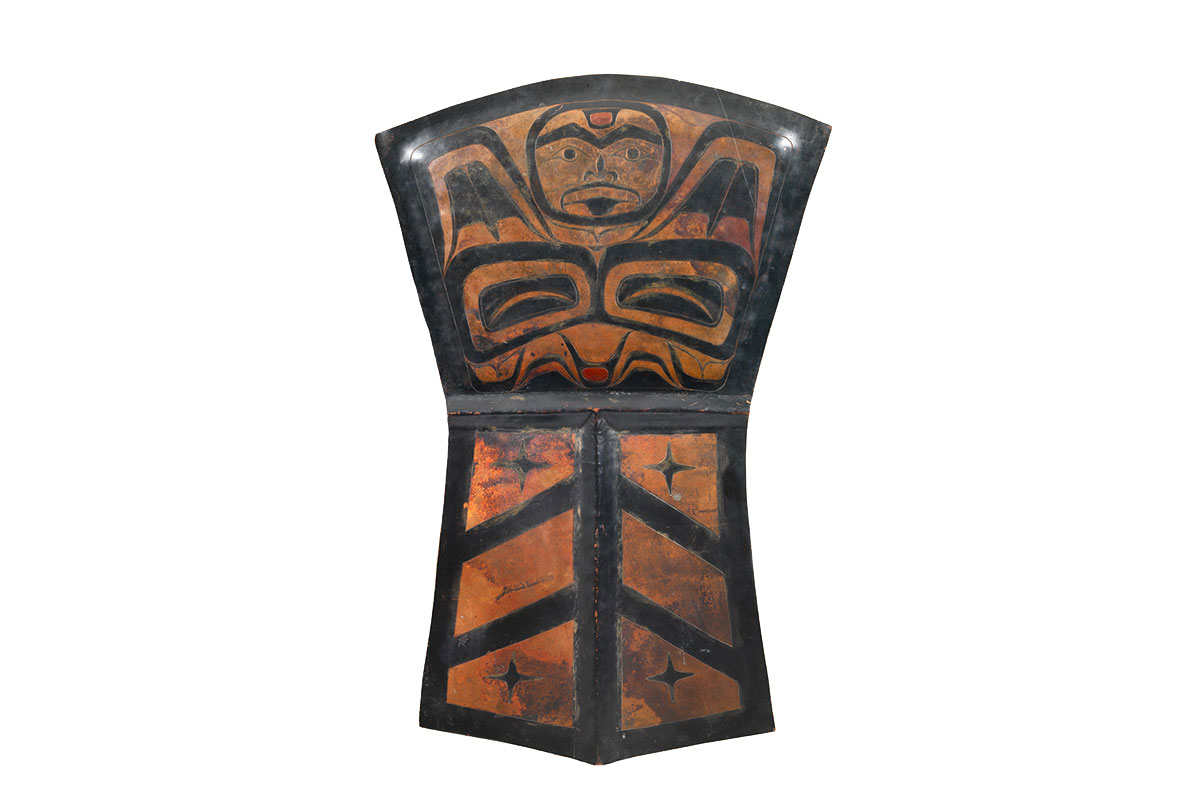Copper
Northern British Columbia
ca. 1860-80
sheet copper, paint
height: 28 ½"
width: 19 ¼"
Inventory # N4336
Sold
PROVENANCE
Collection of Merton D. Simpson, New York
RELATED EXAMPLES
This copper is likely by the same hand as N4352
See: Holm, Bill. Box of Daylight. Seattle: University of Washington Press, 1984, pg. 95 for a discussion of coppers and their uses among Northwest Coast peoples
Brooklyn Art Museum, Cat. No. 16.749.1 – See: Brown, Steven C. Spirits of the Water: Native Art Collected On Expeditions to Alaska and British Columbia 1774 – 1910. Seattle: University of Washington Press, 2000, pg. 181
Eugene and Claire Thaw Collection, New York State Historical Association, Cooperstown, NY, Cat. No. T715 – See: Coe, Ralph T., Brydon, Sherry, Vincent, Gilbert T. (eds.) Art of the North American Indians: The Thaw Collection. Seattle: University of Washington Press, 2000, pgs. 344-345, for a Haida or Tsimshian copper collected by Surrealist Wolfgang Paalen in Haida Gwaii in 1939
The copper is among the most enigmatic objects created by Northwest Coast peoples. Although the origin of the form is unknown, coppers represent immense wealth and prestige from the south coast to Alaska. Extant coppers are made from commercial sheet metal presumed to have been traded from sources in the interior. Prior to European contact they would have been made from local native material however there is no indication that the later coppers were of less value than their predecessors (Holm, 1984). Whatever their origins, coppers were valued relative to large numbers of blankets and later dollars, and served as important emblems of wealth and prestige among the noble families who possessed them.

